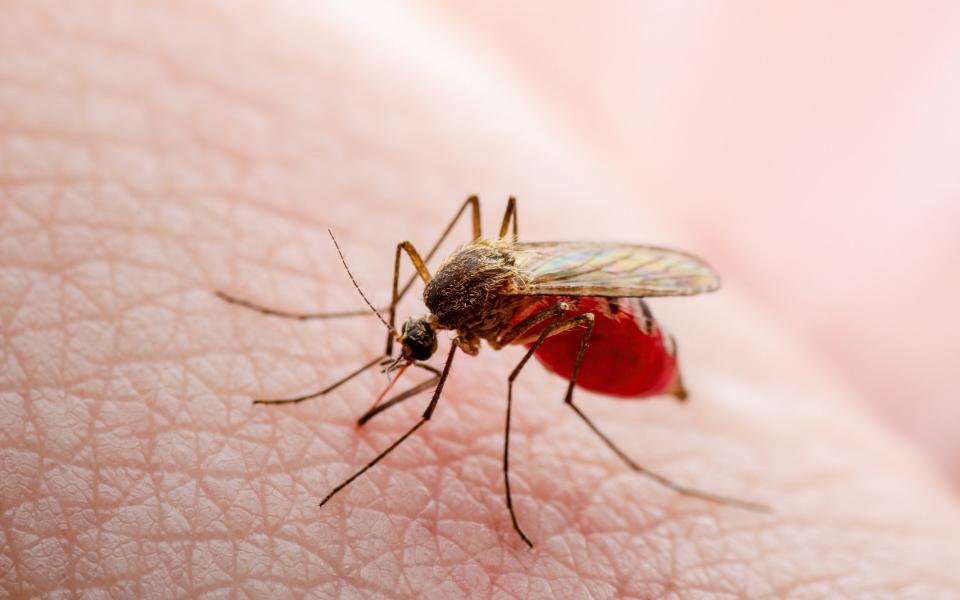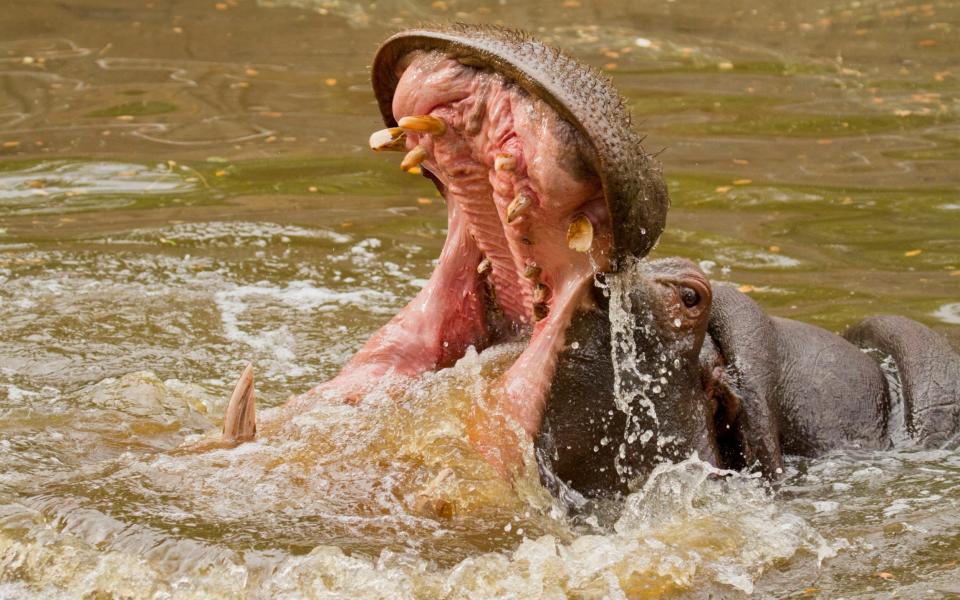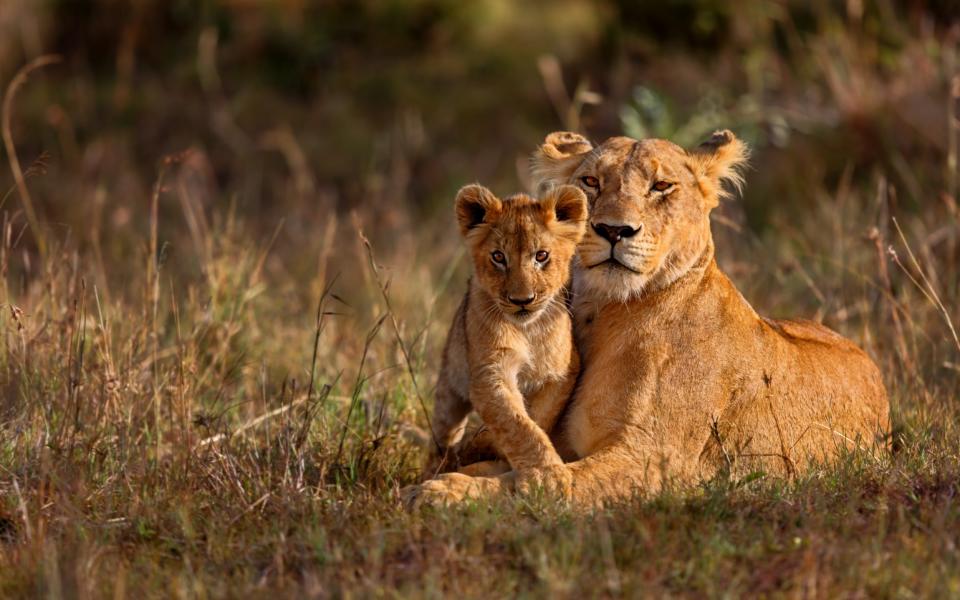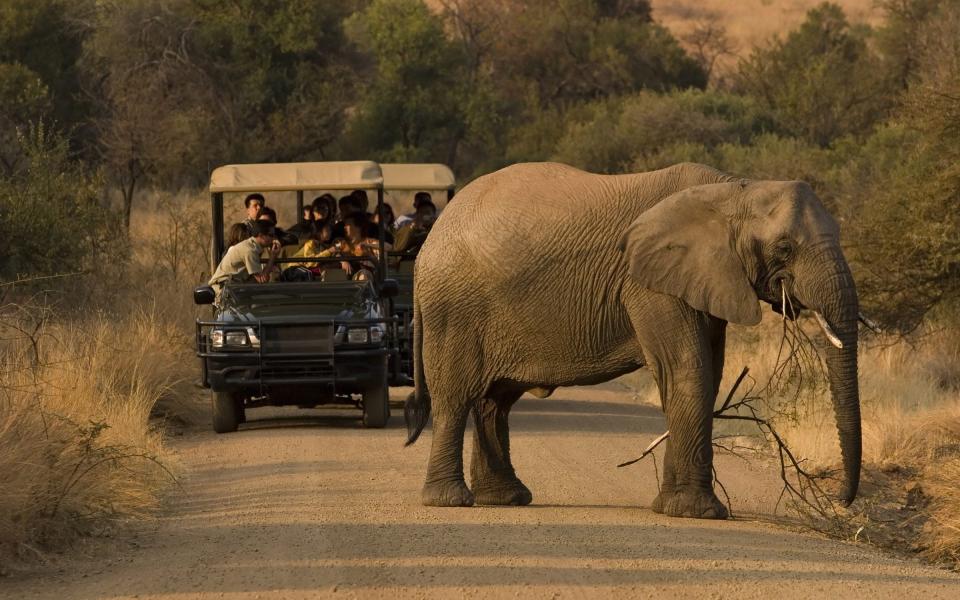Sitting in the back of a 4×4 Landcruiser, watching nature documentaries unfold in real time, it’s easy to become complacent on safari. Scenes shine with a Disney-esque sheen when viewed from the cosseted safety of a tour vehicle. But take a step solid groundand the mood can change very quickly.
Last week, another tourist made the mistake of leaving his car to approach a herd of elephants during a self-drive trip to South Africa’s Pilanesberg National Park. A close-up photo cost the Spanish traveler his life.
Of course, going on safari is generally a safe and peaceful activity. But it is important to remember that these are wild animals with an inbuilt fear of humans. And there are always potential dangers lurking where you least expect them.
Fueled by campfire chats, everyone has a great story to tell. We’ve busted a few myths and exposed some realities to prove that every bush holiday has a surprise (pleasant or otherwise) in store.
The most dangerous animal is not a lion
The title of biggest bush killer is hotly contested, alternately between carnivorous predators and giant herbivores that crush the unwary with their feet. But aside from the Tsavo man-eaters – which acquired a taste for human blood during the construction of the Kenya-Uganda railway in the late 19th century – lions don’t top the list.
Snakes, lurking under rotten logs and in long grass, are responsible for 32,000 deaths in sub-Saharan Africa each year. But enemy number one is undoubtedly the malaria mosquito, which kills hundreds of thousands of people in Africa each year.

It’s the smallest things that cause the most problems
Don’t be fooled by the size. In the wild, creatures smaller than a thumbnail can do more damage than a two-ton beast. Every Africa lover has a horror story to tell about safari ants – or siafu – a biting menace capable of devouring bodies en masse from head to toe.
Their jaws are so strong that they are sometimes used as makeshift surgical staples. My favorite story involves the wife of a lodge manager who woke in the middle of the night to find herself covered in insects. In a panic, she ran outside into the arms of a Maasai askari, who promptly dunked them both in the pool to spread the siafu. When her husband arrived to find his screaming lover half-naked with the staff, ants were the last thing on his mind.
Nothing stands between a hippopotamus and water
More sumo than slim, Africa’s largest mud naut is far from agile – except when it comes to racing home. Hippos can run at 32 km/h (20 mph) to reach their chosen pond, lake or river after a night of grazing on land, as fast as a professional athlete. No obstacle – human or otherwise – will disrupt their path. An additional deterrent to obstacles is a set of 50 cm (20 in) canine teeth, and powerful, aggressive males have developed retractable and highly mobile testicles to prevent them from being ripped off by an attacker in a fight.


A herd of buffalo is (relatively) harmless, but they are a threat on their own
Panicking can be dangerous, especially when a 1.5-ton animal is involved. Despite being among the toughest animals in the bush, buffalo still feel vulnerable when traveling alone. And with a pea-sized brain that weighs only 0.12 percent of their body weight, they act more on impulse than on intellect. Old, grumpy, and cast-out “retired generals” are the ones you have to worry about the most. Always fearful, they take no prisoners and are widely regarded by guides as “the animal you least want to run into at night.”
A big mama is scarier than a little man
Don’t be fooled by their Jon Bon Jovi mane and rock ‘n’ roll roar, lions are pussy cats compared to their mates. Most hunts are organized by the females in a group, carried out with a combination of cunning and patience. But when it comes to protecting her young, every female in the animal kingdom will fight to the end. Even stepping between a youngster and its parent is seen as a threat. After all, a mother’s love knows no bounds.


It is dangerous to be in the wind direction of an animal
Along with a loaded rifle, experienced walking safari guides always carry a bag filled with ash, a simple tool for determining wind direction that can ultimately save lives. Many large animals, including elephants and rhinos, rely heavily on their sense of smell, picking up any scents carried by the wind. So by staying upwind (and undetected), it’s possible to get within a few knee-trembling feet of megafauna without them even knowing you’re there. There are, however, rare occasions when a change in the wind can interfere with your sense of smell, as anyone who’s ever been near a defecating lion can attest.
An elephant never forgives or forgets
Elephants have the largest brains of any land mammal and are intelligent and emotionally aware. Their sharp memory is used to track migration routes to waterholes, but it is also a very useful tool for distinguishing friend from foe. Years ago, while on safari in Gonarezhou National Park in Zimbabwe, I was chased by a large bull who had the ingenuity to take a shortcut and block our path. His hatred of humans probably stemmed from years of violent civil war. But his anger was also directed at our particular vehicle (which he had singled out from the crowd several times). No one ever explained what had happened, but the male only calmed down when it was sold and replaced.


Bites are much worse from those who don’t bark or growl
Lions roar, wild dogs bark, and leopards betray the wild with a chainsaw groan. But the stealthiest killers are silent until the moment their jaws snap shut. Gliding through shallow water, Nile crocodiles can remain motionless for up to an hour, without breathing. Rough scales on their backs also create a low-pressure area, allowing them to reach the surface without so much as a ripple. These combined talents make the prehistoric reptiles excellent ambush hunters, and with a bite pressure of up to 5,000 psi (compared to a measly 160 psi for humans), there’s little chance of escape.